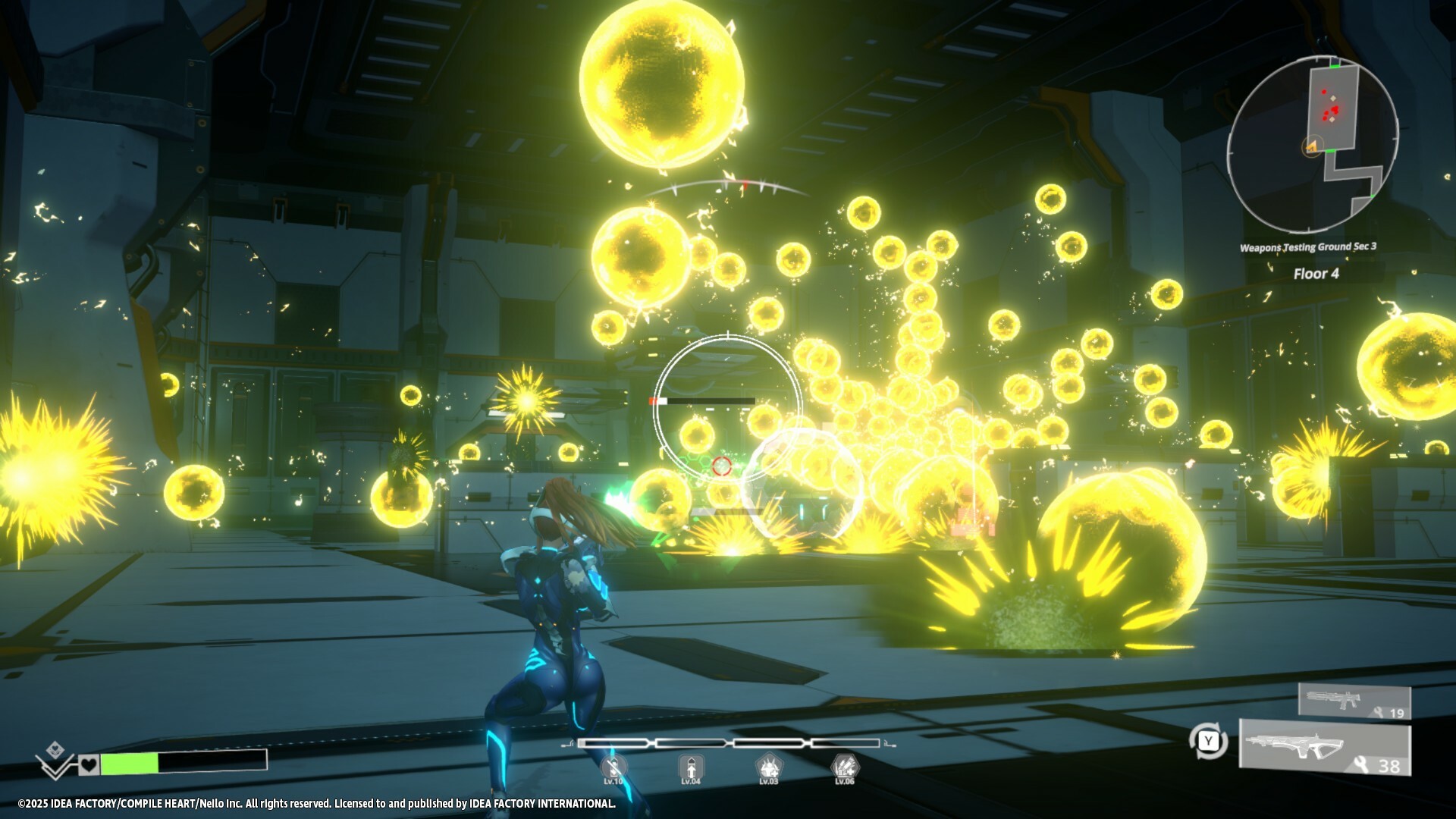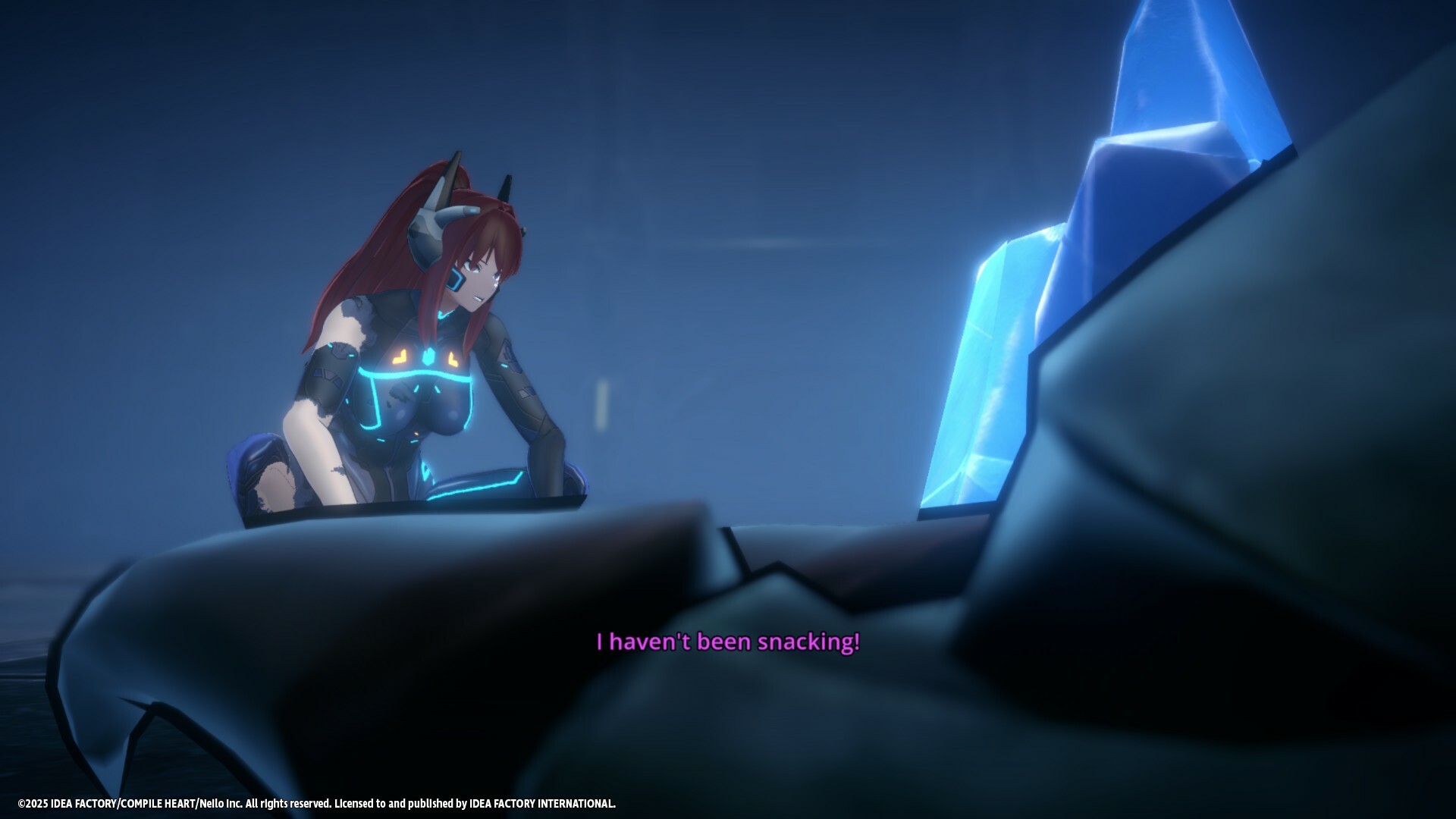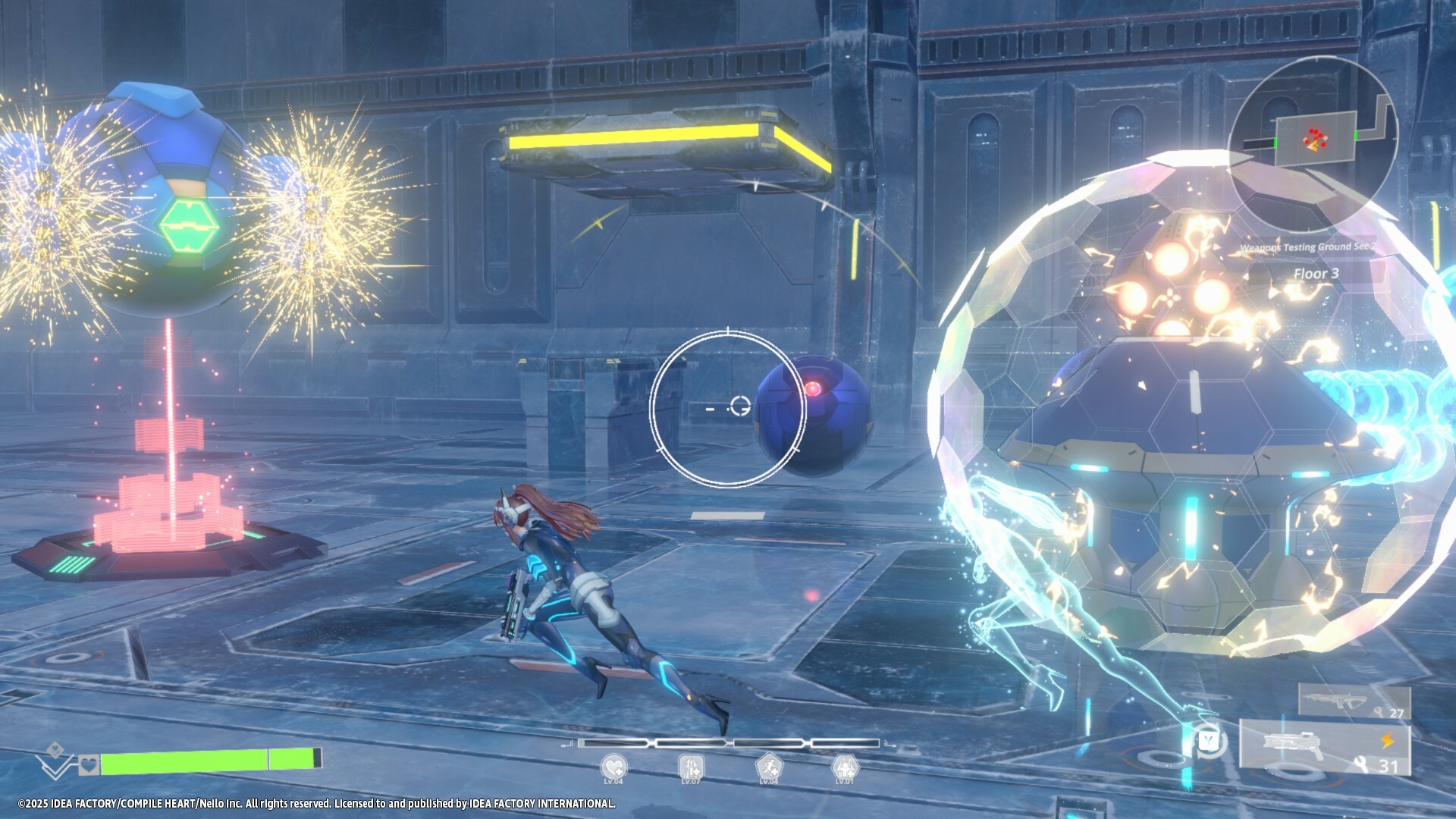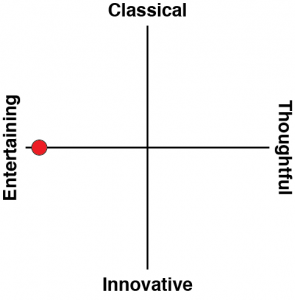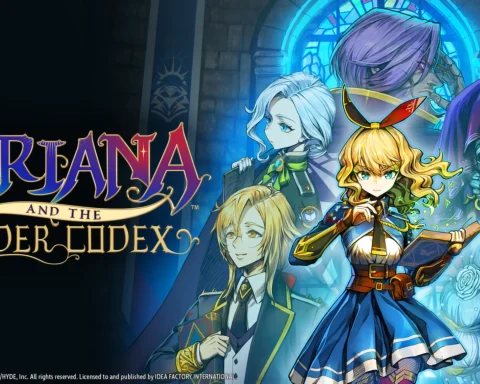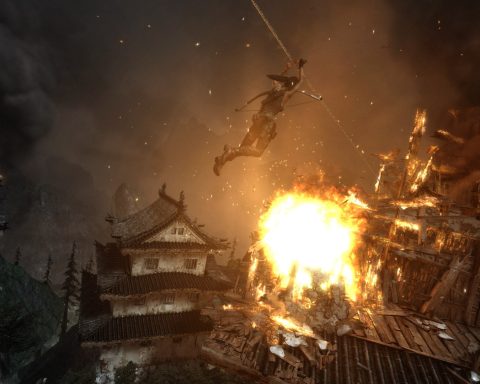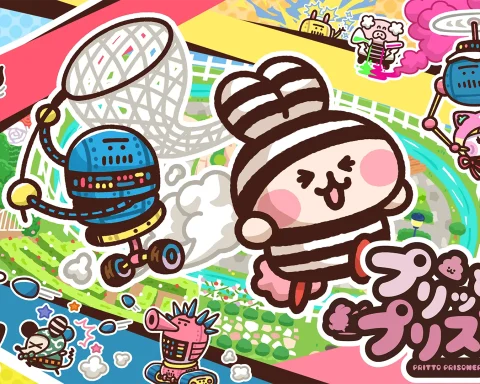Scar-Lead Salvation is very close to being a very good game. The creative energy is good, the aesthetics are appealing, and the action is tight. Unfortunately, while it was clearly inspired by Returnal, it misses the mark in several critical areas.
You play as Willow, who is either a woman or a woman-like robot, with an excellent figure that the game’s camera angle wastes no opportunities to linger over. It is an Idea Factory game, after all. She’s trapped in some kind of military facility with no memories and a less-than-helpful AI is her only companion. With little else to do than play whatever game she’s been thrown into, she needs to make her way through the randomly generated corridors and rooms, fighting off wave after wave of hostile robots that have bullet hell attack patterns of glowing balls and lasers, and try to find an exit to this nightmare.
It’s very unlikely that she’ll achieve that in her first, second, or tenth attempt, though. Eventually, the escalating difficulty of the robots and traps will get her, and she’ll be reset back to the start, with the only indication that something’s changed a number under her eye increasing by one. Just what does it mean that her “00001” marker has become “00002”? It’s meant to be an intriguing enough reason for you to play on and learn more.
From the conversations that Willow has with the AI, you do learn bits about what is going on in the world around you and outside of the facility. Humanity is on the brink of destruction from an alien invasion, and… yes, it’s not the world’s most original story, but it is intriguing and dolled out in just the right increments to keep you guessing and progressing to learn more. The narrative is Scar-Lead Salvation’s greatest strength, let down only by the fact that it can be very hard to pay attention to it if you wander into an enemy-filled room while Willow and the AI are still talking.
What really lets things down is the action. The moment-to-moment gameplay is solid. Willow moves nicely, and there’s a good range of weapons that each have their own features and benefits. It’s not quite as slick as we saw in something like Returnal, but the controller still feels good in the hands as you play Scar-Lead Salvation.
Unfortunately, problem number one is that the environments are just not that interesting. Every room is a metal-coloured square room, with a series of walls and cylinders placed around it to create barriers to weave around and places to grab a moment’s breath. Meanwhile, enemies are drip-fed out at an incredibly slow rate – basically one new enemy per floor, and the floors are large and filled with many rooms, so you’ll fight so many of the same enemy types over and over again, in slightly different patterns. This becomes a total grind, especially given that common enemies are not typically that challenging. Bosses are a different matter, but the gauntlet to get to them is a long and meandering one.
At certain points through the journey, you do unlock the ability to warp to specific levels, rather than have to replay the whole thing from level 1, and there are some upgrades that are persistent, and you don’t lose after a death. This, at least, means that once you’ve dealt with a boss once you don’t need to go through it every time after a death. But the journey to the next boss is just as long as the one before. It didn’t take me too long to really struggle to want to start a new run, because the interesting stuff was just so much further down the track and I was in for a lengthy play session before getting there.
I can see why Idea Factory’s developers made the decisions that they did here. In terms of raw content there just isn’t enough to keep the variety flowing right throughout. More enemy designs, different-looking environments, and so on would have allowed the developers to pace challenges and progression better, but it would have added exponentially to the cost of development, and this was clearly made on a shoestring. But then, perhaps a shorter game that was more challenging in every room would have been to Scar-Led Salvation’s benefit. That is how City of Brass worked (I mention it because it’s basically my favourite first-person roguelike of all, but there are others); it’s only a handful of levels, but the sheer difficulty ensures that you’ll be spending a lot of time playing and none of it is wasted because every new run is interesting from the outset.
Perhaps most disappointing of all is that Idea Factory managed to balls-up the most Idea Factory feature that could have been a fun little bit of variety: The clothes damage system. As Willow takes damage, parts of her armour is meant to tear away, leaving her more vulnerable, even if she heals. I don’t know if this is a consequence of Sony’s censors deciding that this system had to be limited or not, but what actually tears off Willow is generally very minor indeed and certainly not the promised feature that the game’s producer, Hiroshi Aoki, made it out to be:
“There have already been games where characters’ outfits become dishevelled or progressively torn as they take damage, and this was basically what we took as our initial concept. I know it may sound unbelievable, but it’s true. Our idea was, No one’s done realistic physics-based clothes destruction before, right?”
Perhaps I’ve just been playing it incorrectly and for whatever reason haven’t led Willow into situations where her clothes have been torn to shreds, or perhaps it is different on other platforms because I have seen screenshots where the clothing damage is significant, but my personal experience is that in all the time that I’ve been playing and watched Willow have her health reduced to zero over and over again, she’s lost her outer armour, and had a bit of arm and leg material tear away, but that’s about it. Say what you like about fan service, and I’m certainly not suggesting that this is a feature that you should have been looking forward to (unless you wanted to, of course), but my point here is I never expected Idea Factory to try to scandalise us like people did back in the Victorian era. Oh my, an exposed ankle! Or even an elbow! How I blush!
No, sadly, despite what was promised, I don’t think that Scar-Led Salvation ranks highly in Idea Factory’s list of most erotic efforts.
For all my criticisms here, I do want to see another take at this. There’s absolutely room for an anime Returnal, and the base mechanics are there. Scar-Lead Salvation does play well. It is so achingly close to a good game. It’s just crushed by trying to spread that quality across a very, very long gauntlet.


